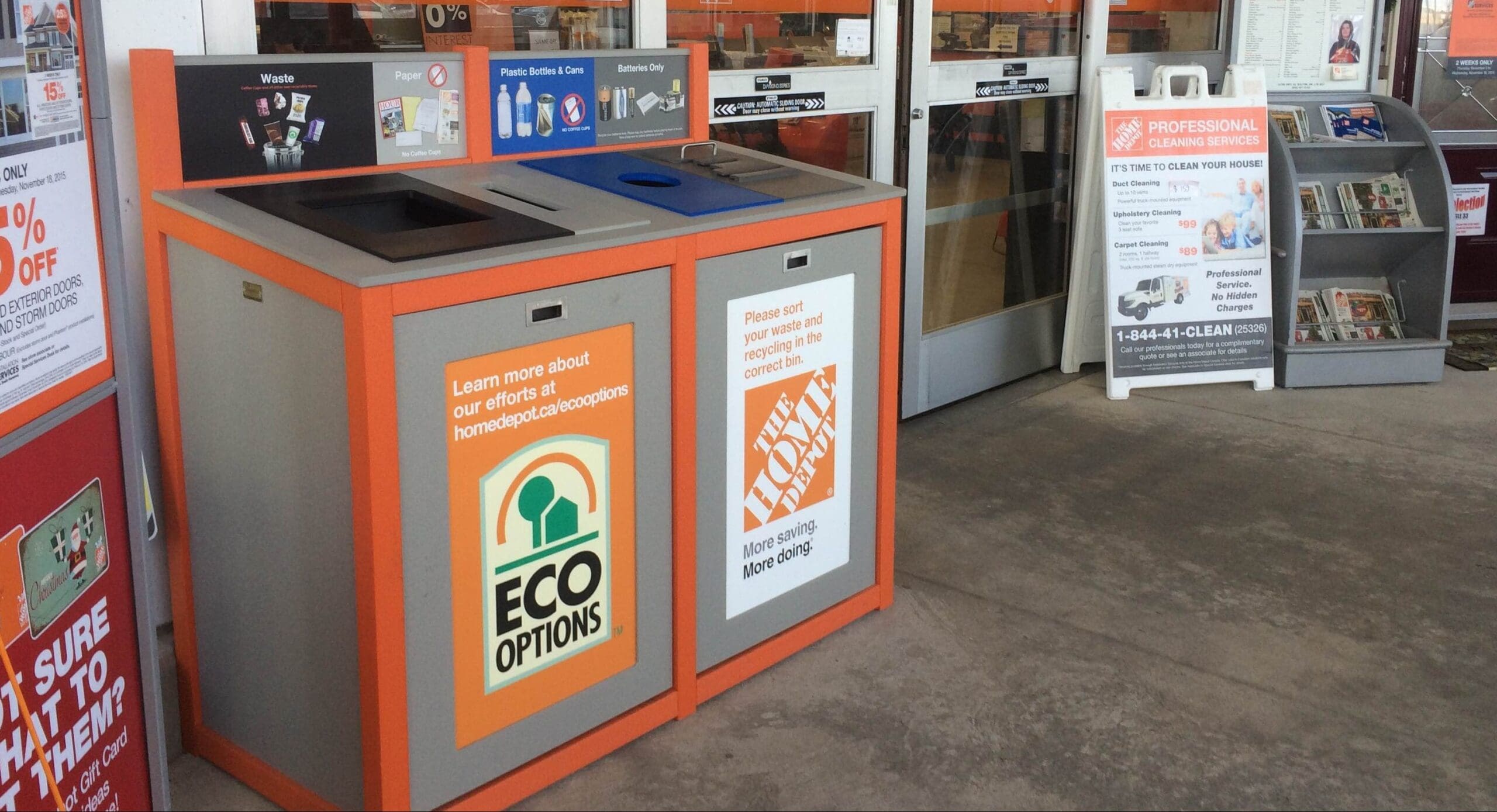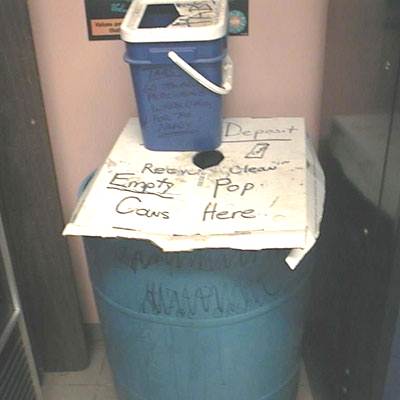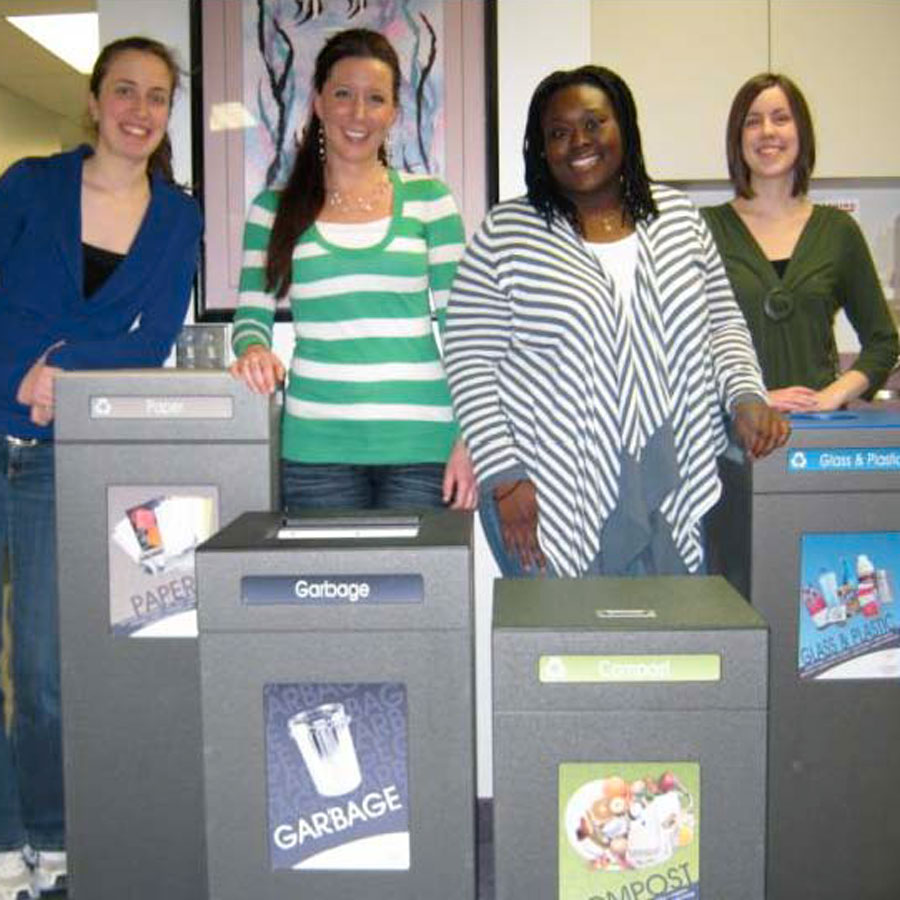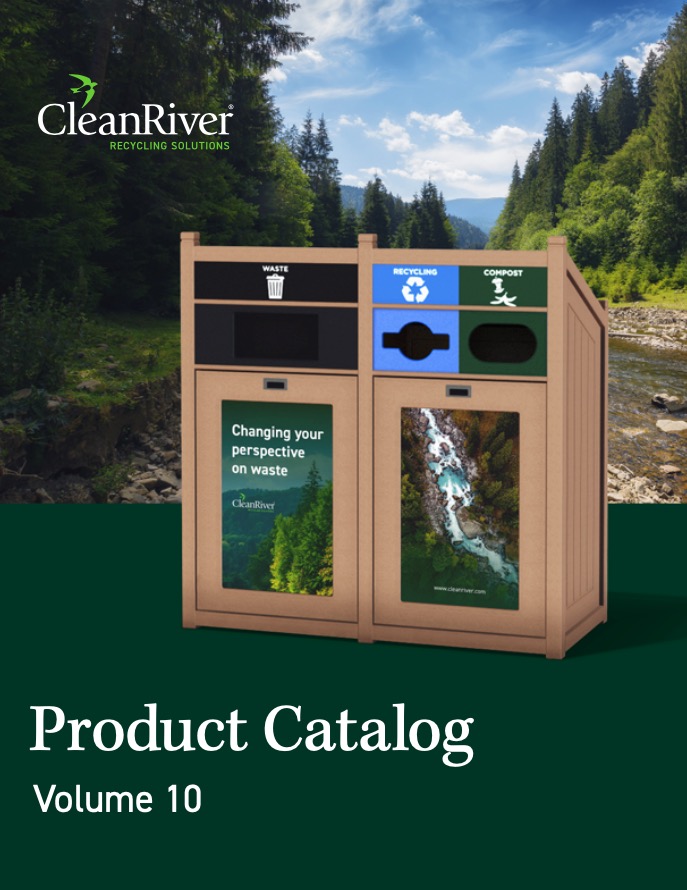Share
When sustainability isn’t a core organizational objective, the recycling program is given minimal support and budget allocation so it often ends up looking like the image above.
In theory this is a good program. You’re providing containers for people to toss their recyclable and compostable waste instead of it going to landfill.
In reality though, what happens when you want to separate glass from the other recyclables? You have to add another bin. And then what happens when you want to separate office paper from your cans and bottles? Again, you add another bin.
Additional bins keep on being added until one day your recycling program looks like this:
Now you have a problem. No-one knows what to do in this situation and even the custodial employees are confused. Instead of a standardized recycling program you have a collection of rogue and orphan bins.
Rogue bins are added each time you want to collect something new. There’s no consistency in style and color. The graphics aren’t on program. No-one knows where they are supposed to toss their waste so you end up with recyclables in the trash and trash in the recycling. And then everything goes straight to landfill.
Orphan bins are placed on their own, for example a battery collection bin by the printer or an organics bin in the kitchen. But no-one knows what they are for. They don’t fit with the theme of the rest of your program and they aren’t labelled very well so they go unnoticed and unused.
Rogue and Orphan bins cripple your recycling program because:
- It’s confusing and takes too long to figure out so people end up tossing their waste in the closest bin not the correct bin.
- Bins can become easily separated so even if people do take the time to figure it out they don’t have the option of tossing their waste in the correct bin, so again it just goes into the closest bin.
- Due to the large number of different bags used and the high levels of contamination the Custodial team aren’t sure what to do either so everything goes into the landfill dumpster.
- There’s no consistency in color or type of container so your program isn’t building a behaviour of recycling.
- The disorganization and disheveled style gives people the impression you don’t care, so they don’t care either.
To effectively divert waste from landfill you need to replace your Rogue and Orphan containers with a standardized recycling program. It also tells your customers and employees that you take sustainability seriously and that you want to make a positive impact on our environment.
For a recycling program to work you need a strong communication strategy.
- Your recycling containers should be a uniform color, and have standard opening colors and sizes for program consistency. It helps people learn where to correctly toss their waste.
- Collect all waste in one container to eliminate the chance of bins becoming separated.
- Use clear graphics to show people what goes in each stream.
- Tell people where the bins are so that they can use them!
- Brand your containers; it tells people you “own” the program and that you take recycling seriously.

When a high school in Toronto replaced their rogue and orphan bins with CleanRiver Transition® containers they increased their diversion rate by 71%.
Similarly when Wilfrid Laurier introduced a standardized centralized recycling program they saw their diversion rate increase to 63%.
CleanRiver will help you implement a recycling program that works. We assist you with a communication strategy that includes high-impact graphics for your containers and branding. We can customize any of our products to suit your color and program needs and our Transition® products will evolve with your program, allowing you to add or remove streams at any time, without buying new bins.
Call us today for a quote at 1-888-628-5756 or email solutions@cleanriver.com.
CleanRiver Transition® products protect your investment by allowing you to change the number and volume of waste streams without having to buy a new bin.
[big_cta image=”https://cleanriver.com/content/uploads/2015/04/widget-icons_06-e1458156032932.png” href=”https://go.cleanriver.com/waste-audit-success” target=”_blank” multiline=”1″]Sustainability Experts Must-have Guide ( Free Download) A How-To Guide for Waste Audit Success. Top tips from Bruce Buchan, CleanRiver CEO, who has conducted over 200 client waste audits.[/big_cta]




